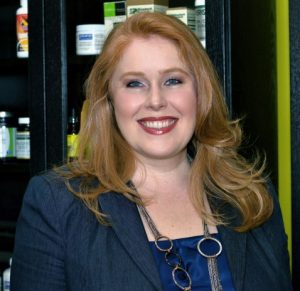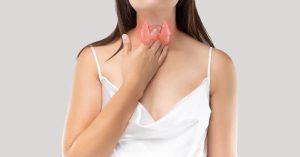Key Takeaways:
- Vaginal yeast infections result from an imbalanced vaginal microbiome.
- Probiotics, especially Lactobacillus, help restore balance and fight Candida.
- Tea tree and oregano essential oils have antifungal properties for topical use.
- Coconut oil and diluted apple cider vinegar offer quick topical relief.
- Dietary changes can create an environment less favorable for Candida growth.
Vaginal yeast infections, also known as vulvovaginal candidiasis, are a common and often frustrating experience for many women. The discomfort, irritation, and disruption to daily life can be overwhelming, leaving those affected searching for relief.
Fortunately, there are natural remedies for yeast infections that are rooted in naturopathic principles and can provide effective solutions without the need for harsh prescription medications.
These remedies are part of a holistic approach to women’s health that focuses on addressing the root causes of imbalances in the body.
In this comprehensive guide, we’ll delve into the underlying causes of vaginal yeast infections, explore the powerful role of probiotics and essential oils, and uncover other natural therapies that can restore balance and harmony to the intimate ecosystem.
Whether you’re dealing with a stubborn infection or simply aiming to maintain vaginal health, this naturopathic approach has the potential to transform your experience.
Understanding the Root Causes of Vaginal Yeast Infections
At the heart of vaginal yeast infections lies an imbalance in the delicate vaginal microbiome. This intricate community of microorganisms, when in a state of equilibrium, helps maintain vaginal pH, ward off harmful pathogens, and support overall reproductive health.
However, certain factors can disrupt this natural balance, allowing the Candida Albicans fungus to proliferate and cause infection.
One of the primary culprits behind Candida overgrowth is the use of broad-spectrum antibiotics. These medications, while effective at eliminating harmful bacteria, can also wipe out the beneficial Lactobacillus strains that normally keep Candida in check.
Without this microbial counterbalance, the Candida Albicans fungus seizes the opportunity to multiply, leading to the characteristic symptoms of vaginal yeast infections.
Diet also plays a crucial role in the development of vaginal candidiasis. A high-sugar diet, whether from refined carbohydrates or added sugars, provides the perfect nourishment for Candida to thrive.
The fungus feasts on these simple sugars, further exacerbating the imbalance in the vaginal microbiome.
Hormonal fluctuations, particularly during pregnancy, menopause, or hormonal birth control use, can also contribute to yeast infections. Shifts in estrogen levels can influence the vaginal environment, rendering it more hospitable for Candida overgrowth.
When these factors – antibiotic use, poor diet, and hormonal changes – converge, they create the perfect storm for Candida Albicans to proliferate, leading to the uncomfortable and often persistent symptoms of vaginal yeast infections.
Recognizing the Signs and Symptoms
The telltale signs of a vaginal yeast infection are often hard to ignore. Women may experience intense itching, redness, and swelling in the genital area, accompanied by a thick, cottage cheese-like discharge. These symptoms not only disrupt daily life but also serve as the body’s clear signal that something is out of balance in the vaginal ecosystem.
In addition to the physical discomfort, vaginal yeast infections can also have a profound impact on emotional well-being. The recurrent nature of these infections, the intimacy involved, and the potential social stigma can all contribute to feelings of frustration, embarrassment, and even a sense of loss of control over one’s own body.
It’s important to recognize these symptoms early on, as leaving a yeast infection untreated can lead to the worsening of the condition and potentially even the development of more serious complications. Prompt action, whether through natural remedies or medical intervention, can make all the difference in regaining control and restoring vaginal health.
The Power of Probiotics in Combating Yeast Infections
As a naturopathic approach to vaginal yeast infections, restoring the balance of the vaginal microbiome is of paramount importance. And at the forefront of this effort are probiotics – the beneficial bacteria that play a vital role in maintaining a healthy vaginal environment.
One of the most potent probiotic allies in the fight against Candida Albicans is the Lactobacillus genus. These hardy strains of bacteria naturally reside in the vagina, where they work tirelessly to create an inhospitable environment for the Candida fungus. By producing lactic acid and hydrogen peroxide, Lactobacillus bacteria help maintain a slightly acidic vaginal pH, which is crucial for keeping Candida in check.
Incorporating probiotic-rich foods, such as plain, unsweetened Greek yogurt, into the diet can be a powerful way to bolster the vaginal microbiome’s defenses. The live, active cultures in these dairy products contain high concentrations of Lactobacillus strains that can help restore the delicate balance, effectively crowding out the Candida Albicans fungus.
But the benefits of probiotics don’t stop at the vagina. The gut-vagina axis, a well-established concept in women’s health, underscores the intimate connection between the gastrointestinal tract and the vaginal ecosystem. By nourishing the gut microbiome with probiotic-rich foods, you can simultaneously support vaginal health, as the beneficial bacteria from the gut can help maintain harmony throughout the entire urogenital system.
For an even more targeted approach, consider incorporating probiotic supplements into your regimen. These concentrated formulas, when taken as directed, can deliver a potent dose of Lactobacillus and other probiotic strains directly to where they’re needed most – helping to actively combat the Candida overgrowth and prevent future yeast infections.
Natural Remedies for Yeast Infections: Essential Oils
Mother Nature has bestowed upon us a remarkable array of essential oils, many of which possess impressive antifungal properties that can be leveraged in the fight against vaginal yeast infections. Two of the most prominent essential oils in this realm are tea tree oil and oregano oil.
Tea Tree Oil
This versatile essential oil, derived from the leaves of the Melaleuca alternifolia plant, has long been revered for its potent antimicrobial capabilities. Numerous studies have demonstrated tea tree oil’s efficacy in inhibiting the growth of Candida Albicans, the primary culprit behind vaginal yeast infections.
When used correctly and diluted appropriately, tea tree oil can be a valuable topical application to help soothe the irritation and discomfort associated with vaginal candidiasis. The antifungal compounds in tea tree oil, such as terpinene-4-ol, work to disrupt the cell membranes of Candida, effectively neutralizing the fungal invasion.
To ensure safe and effective use, it’s essential to dilute tea tree oil with a carrier oil, such as coconut oil or jojoba oil, before applying it to the sensitive vaginal area. This helps mitigate the risk of skin irritation while still allowing the antifungal properties to take effect.
Oregano Oil
Another essential oil powerhouse in the fight against Candida Albicans is oregano oil. Derived from the Origanum vulgare plant, this aromatic oil contains a rich concentration of antifungal compounds, including carvacrol and thymol.
Numerous studies have demonstrated oregano oil’s impressive ability to inhibit the growth and spread of Candida, making it a natural ally in the battle against vaginal yeast infections. The mechanism of action involves disrupting the fungal cell membranes and interfering with Candida’s ability to adhere to vaginal tissues.
Incorporating oregano oil into your natural treatment regimen, whether through oral supplementation or diluted topical application, can provide multi-pronged support. The antifungal properties can help address the underlying Candida overgrowth, while the antimicrobial nature of the oil can also help soothe inflammation and promote healing.
As with tea tree oil, it’s crucial to exercise caution and dilute oregano oil appropriately before use, as the concentrated compound can be irritating to sensitive vaginal tissues if applied undiluted.
Harnessing the Power of Coconut Oil and Apple Cider Vinegar
In addition to the potent antifungal properties of essential oils, the natural world offers other remedies that can provide quick ease and relief from the discomfort of vaginal yeast infections. Two such allies are coconut oil and apple cider vinegar.
Coconut Oil
This versatile, plant-based oil has long been recognized for its diverse health benefits, and its antifungal capabilities are no exception. The medium-chain fatty acids present in coconut oil, particularly lauric acid, have demonstrated impressive inhibitory effects against Candida Albicans.
When applied topically to the vaginal area, coconut oil can help soothe the itching, redness, and irritation associated with yeast infections. Its gentle, emollient nature also makes it an ideal natural moisturizer, helping to protect and nourish the delicate vaginal tissues.
To use coconut oil as a natural remedy, simply apply a small amount directly to the affected area, taking care to avoid internal application. The antifungal properties of coconut oil can work in tandem with the body’s natural healing processes to provide relief and restore balance.
Apple Cider Vinegar
While the idea of applying anything acidic to the sensitive vaginal area may seem counterintuitive, diluted apple cider vinegar (ACV) can be a powerful ally in the fight against vaginal yeast infections.
ACV contains acetic acid, which has been shown to have strong antifungal effects, particularly against Candida species. When used in a diluted form, ACV can help restore the optimal pH balance of the vagina, creating an environment that is less hospitable for the Candida fungus to thrive.
To use ACV as a natural remedy, mix one part vinegar with two parts water, and apply the solution topically to the affected area using a clean cotton pad. Alternatively, you can add a cup of diluted ACV to a warm bath and soak for 15-20 minutes to experience the soothing, antifungal benefits.
It’s important to note that while ACV can be an effective natural remedy, it should be used with caution, as the acidic nature of the vinegar could potentially cause irritation if not properly diluted. Always perform a patch test first and discontinue use if any discomfort occurs.
The Game-Changing Power of Boric Acid Suppositories
In cases where more conventional natural remedies, such as probiotics and essential oils, fall short in providing relief for persistent or recurrent vaginal yeast infections, boric acid suppositories emerge as a powerful solution.
Boric acid, a naturally occurring mineral compound, has been used for centuries in the treatment of various gynecological issues, including stubborn yeast infections. Unlike many over-the-counter antifungal creams or medications, boric acid suppositories work by creating an inhospitable environment for the Candida Albicans fungus, effectively starving it out of the vaginal ecosystem.
The mechanism of action involves boric acid’s ability to disrupt the cell membranes of Candida, interfering with the fungus’s ability to thrive. Additionally, boric acid helps maintain a slightly acidic vaginal pH, which is crucial for keeping Candida in check.
Numerous studies have demonstrated the efficacy of boric acid suppositories in treating even the most stubborn cases of vaginal yeast infections, including those caused by non-albicans Candida species that may be resistant to conventional antifungal treatments.
It’s important to note that the use of boric acid suppositories should be under the guidance of a healthcare provider, particularly for those with a history of recurrent infections or for individuals with certain medical conditions. Improper use or overuse of boric acid can potentially lead to irritation or other complications.
When utilized correctly, boric acid suppositories can be a game-changing natural remedy, providing relief and restoring balance to the vaginal ecosystem for women who have struggled with persistent yeast infections.
Fortifying the Immune System with Targeted Vitamins
In the battle against vaginal yeast infections, the strength of the immune system plays a crucial role. By incorporating specific vitamins into your natural treatment regimen, you can bolster your body’s defenses and provide an additional layer of protection against the Candida Albicans fungus.
Vitamin C
Known for its powerful antioxidant properties, vitamin C is also a vital player in supporting the immune system’s response to Candida overgrowth. This essential nutrient helps modulate the activity of immune cells, such as white blood cells, which are responsible for identifying and eliminating fungal invaders.
Moreover, vitamin C has been shown to possess anti-inflammatory effects, which can help reduce the swelling and irritation associated with vaginal yeast infections. For women seeking a natural approach, ensuring adequate vitamin C intake, either through dietary sources or supplementation, can be a valuable addition to their treatment plan.
Vitamin E
Another essential vitamin that can contribute to the fight against vaginal yeast infections is vitamin E. This fat-soluble antioxidant works in synergy with vitamin C, helping to protect cells from oxidative damage caused by the inflammatory response to Candida Albicans.
Vitamin E also plays a role in maintaining the integrity of the vaginal mucosa, the delicate lining of the vagina that can become inflamed and compromised during a yeast infection. By supporting the health of these tissues, vitamin E can help facilitate the healing and restoration of the vaginal ecosystem.
Incorporating vitamin E-rich foods, such as nuts, seeds, and leafy greens, or considering a targeted supplement, can be a valuable addition to your naturopathic approach to managing vaginal yeast infections.
The Importance of Diet Modification
As we’ve explored, the root causes of vaginal yeast infections often lie in the disruption of the delicate balance within the vaginal microbiome. One of the key factors that can contribute to this imbalance is diet.
The foods and beverages we consume can have a profound impact on the growth and proliferation of Candida Albicans. Certain dietary choices, particularly those high in refined carbohydrates and added sugars, can serve as a veritable feast for the Candida fungus, fueling its overgrowth and leading to the development of a yeast infection.
Conversely, making strategic dietary modifications can be a powerful ally in the fight against vaginal candidiasis. By limiting the intake of sugary and high-carbohydrate foods, and instead focusing on nutrient-dense, anti-inflammatory options, you can effectively starve the Candida fungus and create an environment that is less hospitable for its growth.
Incorporating probiotic-rich foods, such as plain, unsweetened Greek yogurt, kefir, and fermented vegetables, can be especially beneficial. These foods not only provide a direct source of beneficial Lactobacillus bacteria but also help restore the overall balance of the vaginal microbiome.
Additionally, including antifungal-rich foods in your diet, such as garlic, onions, and cruciferous vegetables, can further support your body’s natural defenses against Candida Albicans.
It’s important to note that while dietary changes alone may not be a silver bullet for resolving a full-blown yeast infection, incorporating these naturopathic principles can be a valuable complement to other natural remedies. By nourishing your body with the right foods, you can create an internal environment that is less hospitable for Candida to thrive, reducing the risk of future infections and supporting long-term vaginal health.
When to Seek Professional Guidance
While natural remedies can be highly effective in addressing vaginal yeast infections, there are instances when seeking professional medical guidance is advisable. It’s crucial to recognize the signs and symptoms that may indicate the need for a healthcare provider’s expertise.
If you’ve been diligently incorporating natural therapies, such as probiotics, essential oils, and dietary modifications, and have seen no improvement in your symptoms within a week, it may be time to consult with a naturopathic physician or other healthcare provider. Persistent or worsening symptoms could signal the presence of a more complex infection or an underlying condition that requires specialized assessment and treatment.
Additionally, if you experience symptoms that are accompanied by fever, unusual discharge, or any other concerning developments, it’s important to seek medical attention promptly. These may be signs of a more serious infection or a complication that requires prompt intervention.
Working closely with a healthcare provider who is versed in naturopathic principles and women’s intimate health can be invaluable. They can provide a comprehensive evaluation, identify the root causes of your yeast infection, and develop a personalized treatment plan that seamlessly integrates natural remedies with any necessary medical interventions.
Remember, your health and well-being are of utmost importance. By recognizing when to seek professional guidance, you can ensure that you receive the most appropriate and effective care to restore balance, alleviate discomfort, and prevent future recurrences of vaginal yeast infections.
Embracing a Naturopathic Approach to Vaginal Health
Navigating the challenges of vaginal yeast infections can be a frustrating experience, but by embracing a naturopathic approach, you can unlock a world of effective, all-natural solutions. From the power of probiotics and the antifungal prowess of essential oils to the game-changing potential of boric acid suppositories, this guide has explored a comprehensive range of natural remedies that can provide relief and restore balance to your intimate ecosystem.
By understanding the underlying causes of yeast infections, recognizing the early warning signs, and incorporating these naturopathic therapies into your self-care routine, you can take an active role in managing your vaginal health and preventing future recurrences.
Remember, your well-being is your greatest asset, and a naturopathic practitioner can be a valuable partner in your journey to optimal vaginal and overall health.
Ready to make the first step towards owning your vaginal health? Contact Dr. Karen Threlkel today!







